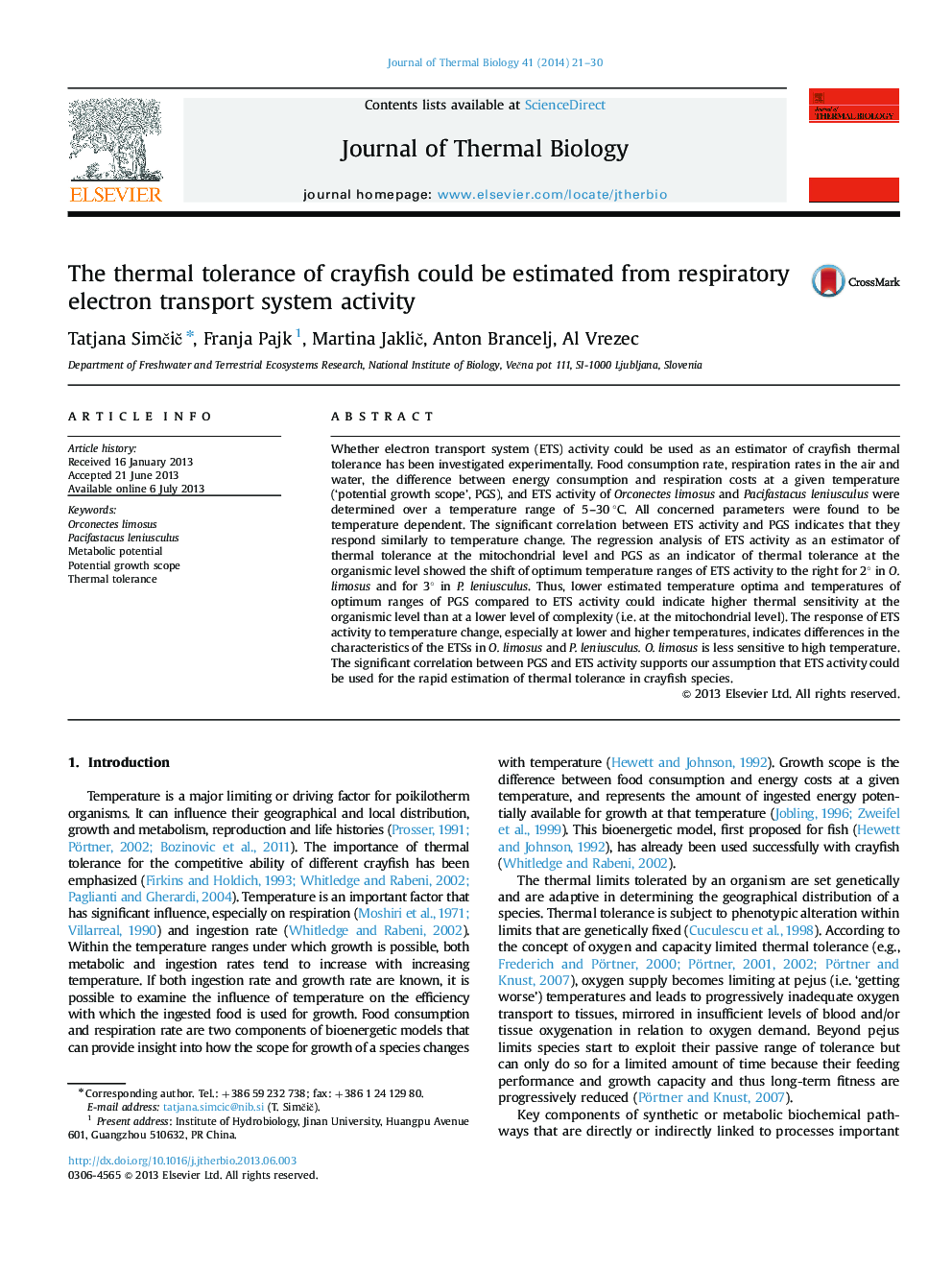| کد مقاله | کد نشریه | سال انتشار | مقاله انگلیسی | نسخه تمام متن |
|---|---|---|---|---|
| 2842944 | 1571104 | 2014 | 10 صفحه PDF | دانلود رایگان |
• ETS activity was studied as an estimator of crayfish thermal tolerance.
• ETS activity and scope for growth responded similarly to temperature change.
• ETS activity in crayfish species responded to temperature change differently.
• ETS activity could be used for the estimation of thermal tolerance of crayfish species.
Whether electron transport system (ETS) activity could be used as an estimator of crayfish thermal tolerance has been investigated experimentally. Food consumption rate, respiration rates in the air and water, the difference between energy consumption and respiration costs at a given temperature (‘potential growth scope’, PGS), and ETS activity of Orconectes limosus and Pacifastacus leniusculus were determined over a temperature range of 5–30 °C. All concerned parameters were found to be temperature dependent. The significant correlation between ETS activity and PGS indicates that they respond similarly to temperature change. The regression analysis of ETS activity as an estimator of thermal tolerance at the mitochondrial level and PGS as an indicator of thermal tolerance at the organismic level showed the shift of optimum temperature ranges of ETS activity to the right for 2° in O. limosus and for 3° in P. leniusculus. Thus, lower estimated temperature optima and temperatures of optimum ranges of PGS compared to ETS activity could indicate higher thermal sensitivity at the organismic level than at a lower level of complexity (i.e. at the mitochondrial level). The response of ETS activity to temperature change, especially at lower and higher temperatures, indicates differences in the characteristics of the ETSs in O. limosus and P. leniusculus. O. limosus is less sensitive to high temperature. The significant correlation between PGS and ETS activity supports our assumption that ETS activity could be used for the rapid estimation of thermal tolerance in crayfish species.
Journal: Journal of Thermal Biology - Volume 41, April 2014, Pages 21–30
